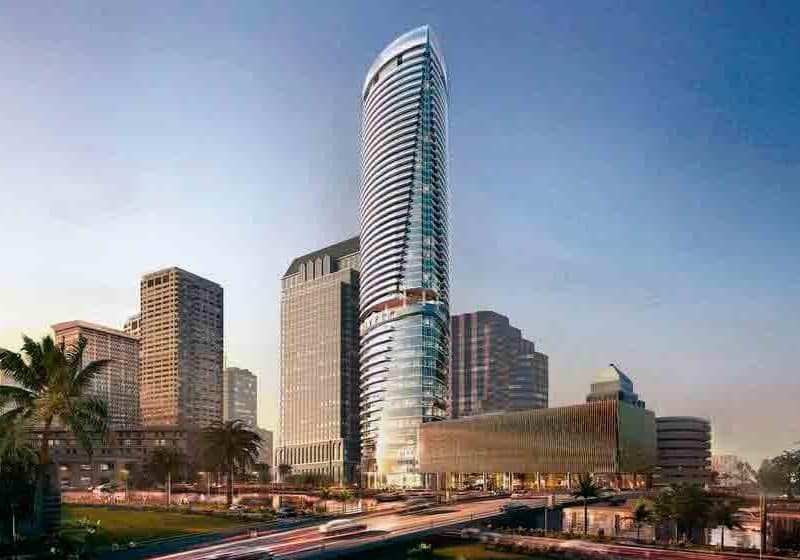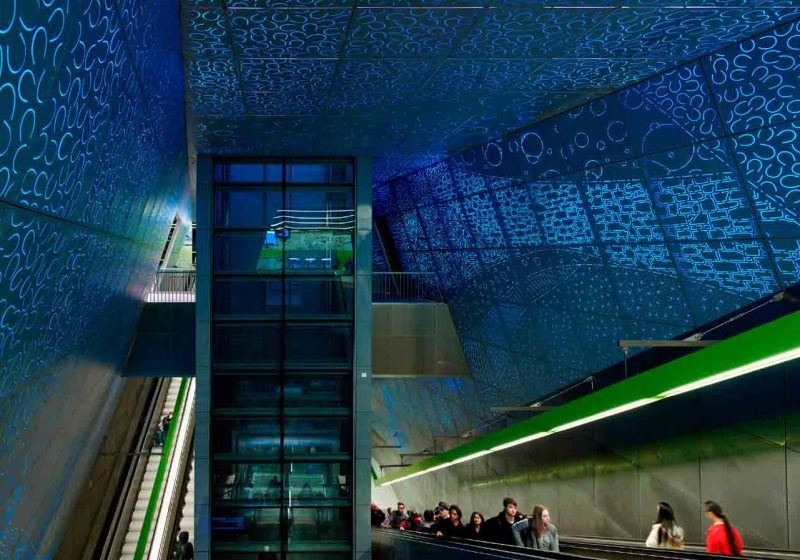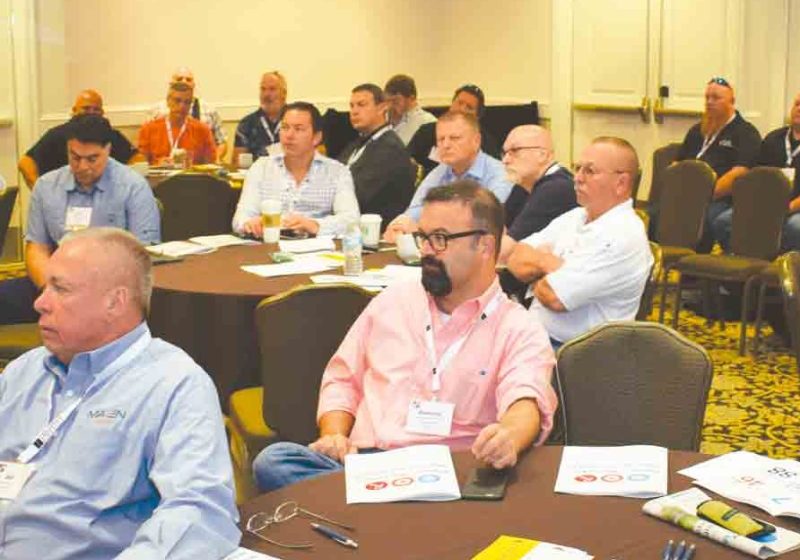Ninth Symposium on Lift & Escalator Technologies will be reaching for greater heights in September.
Editor’s Note: Dr. Bryan Laubscher of The International Space Elevator Consortium (ISEC) will be the keynote speaker at the ninth Symposium on Lift and Escalator Technologies, taking place in September, and at a University of Northampton (UoN) open lecture the evening before. Laubscher will be speaking on “The Space Elevator Concept and Dynamics.” As a preview, this article provides some background of the technology and aspirations of the project. You can find more information about the UoN lecture and the Lift & Escalator Symposium at www.liftsymposium.org.
The space elevator is a new dream in space travel. Though not yet realized, there is sufficient existing technology to make it feel attainable. As the brainchild of 17th-century Russian scientist Konstantin Tsiolkovsky, the idea of a tangible connection to outer space has been progressing for centuries. In 1959, fellow Russian Yuri Artsutanov proposed the contemporary idea of a towering structure that relied not on compressive strength, but on tensile strength. A satellite in geosynchronous Earth orbit would send a tether down through the atmosphere to the ground. Since then, this idea has found multiple homes: an American science journal in 1966, in which four scientists wrote of a “sky-hook”; an “orbital tower” vision in 1975 by Jerome Pearson, who matured the idea working through the mathematics behind the theory; and, lastly, even being popularized in Arthur C. Clark’s 1979 novel The Foundations of Paradise.
At first glance, it would seem unnecessary to develop such an innovative way of reaching space, as some would argue it has already even been made a habitat: the International Space Station has been a permanent home for astronauts since 2000. The fundamental reason, it seems, is to improve accessibility. Space is as beyond reach, to almost all of the human race, as the majority of continents were before the expanse of railways made far-off lands connected. Not only this, but space travel has yet to be made commercial or affordable, and transit is neither of quality nor safe. Surely all this leads to the suggestion that maybe we were seeking a solution in the wrong place, using the wrong technology.
The modern space elevator is most like the idea of Artsutanov with the same fundamental principle: a thin vertical tether stretched from ground to space. This, however, is where the similarities end. The latest vision requires a tether attached to Earth at the equator, stretching up to a counterweight far past geostationary Earth orbit. Such an orbit is precisely over the equator and has a radius that provides revolutions at the correct speed to ensure a satellite permanently remains exactly over the same geographical point on Earth. Elevator cars known as “climbers” ascend and descend at the speeds of fast trains, with multiple climbers attached to a tether at any one time carrying cargo or passengers. It is estimated that the journey would take 4-5 days before reaching geostationary Earth orbit, and a new climber would be introduced on a daily basis.
But, the space elevator has the potential for much more than simply transferring payloads out of Earth’s atmosphere. The rotational motion at the core of this idea could be exploited and have a separate function: to inject payloads into planetary transfer orbits. By simply changing where the cargo is jettisoned from the tether, a different orbit can be achieved. If released after 2,000 km, the payload would obtain Low Earth Orbit. Release after four to five days would give geostationary Earth orbit. Beyond this allows for transplanetary injection, possible because further travel along the tether increases the speed of the cargo until it is moving fast enough to escape Earth orbit. Members of the ISEC suggest the Moon and Mars as initial targets for interplanetary travel and hope for the space elevator’s use as a delivery system for the infrastructure required by first settlers.
As for the physics of the space elevator, the tether is held upright by centrifugal force acting from the rotation of Earth to pull the tether taut (away from Earth) and centripetal force pulling the tether toward Earth, much like a mass swung in circles on a string. This requires tremendous force on the tether, so the properties of the tether’s composition material are of great importance; namely, its specific strength. The specific strength of a material is a ratio of its strength and density, and carbon nanotubes have been hailed as the future for this project (Figure 1). A high tensile strength and low density allows this allotrope of carbon to support its own weight for much greater lengths than any other material available. ISEC scientists are hoping for a specific strength of 30-40 MYuri, a new unit created in homage to Yuri Artsutanov (1MYuri = 1 million Pa/(kg/m3)). This is a greater value than essential to the creation of a tether, but, for ease of practicality, engineers have opted for increased specific strength, something that is easily achievable according to predictions for carbon nanotubes. As for the design of the tether, it would have to taper in thickness downward toward Earth from the point of greatest tension (at the geosynchronous Earth orbit), where the tether would be thickest, to the point of least tension (at the surface), where it would be at its thinnest.
Carbon nanotubes are also very elastic, which may allow them the flexibility to deal with the Coriolis force produced while the climbers are ascending: as the velocity of the tether increases with distance away from the Earth as the each climber ascends, they will be traveling around the planet slower than that part of the tether onto which it is climbing. This means that as the Earth rotates forward, the Coriolis force will act backward. This process will be the same but reversed during the descent phase of each climber. Dr. Bryan E. Laubscher is the founder of Odysseus Technologies, a company with the goal of developing these high-strength nanotube materials. Odysseus has already invented a new way of synthesising such materials, complete with proof-of-principle experiments. Also on the board of directors of the ISEC, we are delighted that he will be presenting on this topic at the symposium.
A counterweight positioned an estimated 100,000 km in space is required because of the nonuniform gravitational and centrifugal forces acting on the tether as it extends away from Earth, and there have been multiple suggestions as to what could be used, ranging from a captured asteroid to used climbers to a space dock.
The space elevator will be powered by solar cells on climbers, each generating electricity from either sunlight or laser light beamed from the base of the tether at the ground station. One of the many benefits of this power arrangement is that the climbers are unencumbered by the weight of fuel that rockets must carry — while 90% of a rocket is dedicated to propellant, climbers’ additional weight must only consider cargo and passengers. Another benefit is the increased safety of the venture realized by eliminating the explosion hazard that comes with rocket fuel.
Climbers have a wide range of suggested designs, but most hope to use rollers that allow them to ascend the tether using friction.
Maintaining the functions of the tether and ensuring its safety would be the job of maintenance climbers, which would deal with small-debris damage and provide constant inspections. All climbers, however, are provided with their own propulsion systems to protect against the inevitable satellites and large pieces of space junk. It is hoped this design will be sufficient to push the tether away from harm (and that the tether will bend to accommodate this movement).
Constructing the space elevator is a challenge, as the question of how to suspend miles of tether ribbon from outer space back down to Earth has no simple answer (Figure 2). It will require multiple stages. The first stage is using rockets to lift a seed ribbon of carbon nanotubes weighing 80 T into low Earth orbit. From there, the seed ribbon will be assembled into a longer ribbon before it is boosted by additional rockets to geosynchronous Earth orbit and allowed to become stable. From this initial ribbon, more and more material will be added, extending the tether up into outer space and down toward Earth until the end of the lowest part of the ribbon is pulled downward by gravity. The tether will then be captured and anchored at the ground station.
From that initial thickness, the tether will be continuously expanded. It has such a great lifting ability that even a thickness of 7 cm could lead to the transfer of 1,000 T of material per day — comparable to three complete International Space Stations every day. The reduction in price per kilogram is phenomenal. It currently costs approximately US$20,000 per kilogram sent into space for every payload. The space elevator could slash that to mere dollars.
For now, however, the developmental process is key. A pathfinder mission is first, simply to experiment with known technologies — for example, Kevlar® — about the feasibility of moving masses up and down a ribbon. This was first attempted in 2006 by LiftPort Group, which stretched carbon ribbon 1 mi. into the sky using balloons and sent robots to ascend it (a test that was considered a success, to an extent). From there, ISEC suggests moving on to the seed tether with the aim that, by 2031, a ribbon should be deployed and captured in the way previously described. Single-string testing is then envisioned to examine the proposed flow of climbers as a simulation, while the tether is continually reinforced. Testing will validate system performance under operating standards and lead to limited operational capacity in which the space elevator really begins to take shape. At this point, all the essential hardware will have been deployed, and personnel will be ready for assessment. Just before full operational capacity, services of the space elevator will be expanded; improved; and, the ISEC hopes, new functions will be added.
The superstructure of the space elevator will be expansive (Figure 2). A ground station, known as the Earth port, is a complex anchoring the tether to the ground and providing a place for loading and unloading cargo and passengers. A geostationary Earth orbit node is also envisioned as a complex for activities of the space elevator partway up the tether. At the far end would be the apex anchor, made up of the counterweight and another complex for activities of the space elevator.
Of course, a project of this size must have protection, so a volume of space around each port and node, and the column of the tether itself, will have monitoring similar to that of airspace. The region around the Earth port will extend from the ocean floor and up to the vacuum of space. And, for the geostationary Earth orbit and apex nodes, there will be a protected region that encompasses any volume swept out by the tether as the Earth rotates.
It may appear as though one of the limitations of this venture is the loading and unloading of cargo and passengers, as the tether is restricted to anchoring along the equator. Humans have become used to the idea of transport, such as trains, being accessible within minutes of their homes, and countries would wish to have their own terminals within their own borders. This is feasible because the only part of the tether or node desired to be stationary must remain over the equator, so it is conceivable to have two or more tethers reflected on either side of the mirror-line of the equator (Figure 3).
Visual pollution should not be of much concern. Whereas many modern airports’ expansion and construction of train terminals can cause consternation, the impact of an Earth port should be minimal. It would be significantly smaller than an airport, and the space elevator and any ports in space would only be visible if caught in just the right light.
There is a vision of a space elevator that can be a place of tourism or a port for interplanetary travel. It may offer the capability of power generation from fully accessible solar panels or the ability to access resources from mining the Moon. Visionaries hope for hospitals and factories. Maybe it will become a new frontier.
- Figure 1: Carbon nanotube illustration from Wikipedia
- Figure 2: Outline of space-elevator structure from ISEC website
- Figure 3: Multiple tethers would be feasible; screenshot from Upward Bound: Space Elevators
References
[1] Aravind, P.K. “The Physics of the Space Elevator,” American Journal of
Physics, p. 125-130 (2007).
[2] Arthur, I. “Upward Bound: Space Elevators” (2018, April 4).
[3] Donahue, M.Z. “People Are Still Trying to Build a Space Elevator.”
Retrieved from Smithsonian Magazine (www.smithsonianmag.com/
innovation/people-are-still-trying-build-space-elevator-180957877)
(2018, April 4).
[4] Fitzgerald, M., Hall, V., Swan, P.A. & Swan, C.W. “Design Considerations
for the Space Elevator Apex Anchor and GEO Node,” Irvine (Lulu.com)
(2017).
[5] Smitherman, Jr., D.V. “Space Elevators: An Advanced Earth-Space
Infrastructure for the New Millennium,” Huntsville: NASA (2000).
[6] “Space Elevator.” Retrieved from Wikipedia (en.wikipedia.org/wiki/
Space_elevator)(2018, April 4).
[7] “Space Elevator Architectures,” Retrieved from ISEC (isec.org/wp-content/
uploads/2017/05/SEArchitectures_rev0.pdf )(2018, April 4).
[8] “Space Elevator FAQ.” Retrieved from ISEC (isec.org/space-elevator-faq)
(2018, April 4).
[9] “What is a Space Elevator (in 500 Words or Less)?” Retrieved from ISEC
(isec.org/2016-05-29-06-04-13/what-is-a-space-elevator-in-500-wordsor-
less)(2018, April 4).
[10] “By Original Hochgeladen von Schwarzm am 30.” Selbst gemacht mit
C4D/Cartoonrenderer, GNU FDL – German Wikipedia, original upload
December 29, 2004, by APPER, CC BY-SA 3.0 (commons.wikimedia.
org/w/index.php?curid=350208).
Get more of Elevator World. Sign up for our free e-newsletter.













